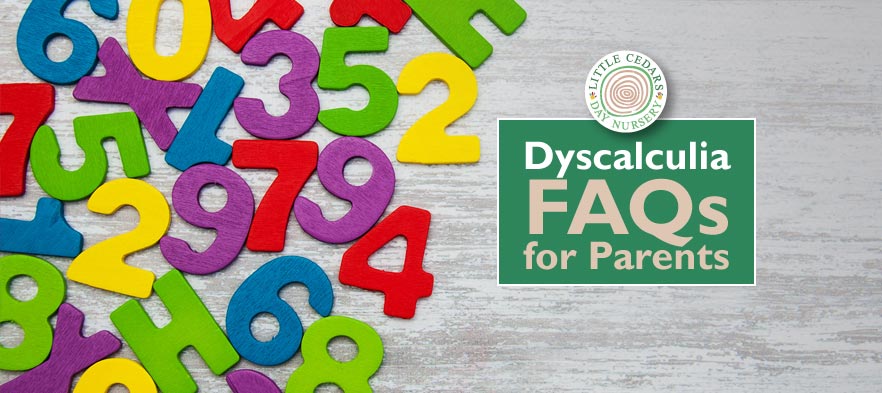
 In today’s guide, we answer frequently asked questions (FAQs) about Dyscalculia, particularly in relation to children, including preschoolers. Around 5% of children of school age are thought to have dyscalculia.
In today’s guide, we answer frequently asked questions (FAQs) about Dyscalculia, particularly in relation to children, including preschoolers. Around 5% of children of school age are thought to have dyscalculia.
Isn’t Dyscalculia like Dyslexia, but for Numbers?
Not really. Both conditions can make learning maths tricky, but they are quite different. Learn more about dyslexia here, or read on to learn about dyscalculia.
Bill Gates, founder of Microsoft, has dyscalculia. So do pop stars Robbie Williams and Cher. Even Benjamin Franklin had the condition.
What is Dyscalculia?
Put simply, dyscalculia is a difficulty in understanding numbers. Indeed, it’s sometimes referred to as an arithmetic-related learning disability. Research into it is currently only at an early stage. People suffering from the condition will find all mathematical activities troublesome. Even concepts like whether a number is larger or smaller than another may be difficult to comprehend, so even more advanced mathematical concepts will be very difficult for sufferers to grasp. As with dyslexia, the condition can afflict people of any level of intelligence. However, there are thought to be possible links between dyscalculia and Asperger’s Syndrome or even Autism in some cases. Those with ADHD are also often prone to learning disorders like dyscalculia.
What are the Signs/Symptoms of Dyscalculia?
 A few of the possible signs of dyscalculia include:
A few of the possible signs of dyscalculia include:
-
- Difficulty understanding numbers and in acquiring mathematical skills;
- Difficulty manipulating and comparing numbers and quantities;
- Difficulty remembering number facts and procedures;
- At pre-school age, children may have difficulty grasping the link between number symbol “4” and the word “four”;
- They may also be unable to connect the number to the same quantity of objects;
- Preschoolers may even be unable to grasp the concept of counting, what it all means and how it applies to everyday objects and scenarios;
- They may also be unable to reliably count in the correct order, without error;
- Once they start school, children with dyscalculia may have difficulty with simple addition, subtraction, division, multiplication, number facts and even mathematical symbols like + and -;
- Graphs and charts based on numbers may seem meaningless to them;
 They may also continue to use fingers to count long after their contemporaries have moved on to mental counting;
They may also continue to use fingers to count long after their contemporaries have moved on to mental counting;- Dyscalculia can manifest itself in games, for example draughts and chess. A sense of direction and the planning of moves may not come naturally;
- Even simple keeping of score during sports games like cricket, netball or football may be troublesome;
- Later on, money management may also be a problem;
- Older children who are aware that they have the condition may become anxious about attempting any mathematical problem. This could even turn into phobia around going to school and diminished self-confidence;
- It’s also worth noting that many people who have dyscalculia may also have problems with their memory;
- The condition may also adversely affect how well the brain and eyes work together. This can make coordination and judging of distances more difficult.
Please note: with all the possible symptoms mentioned in this guide, having symptoms does not necessarily prove the existence of the condition. It’s therefore important not to jump to conclusions without proper, professional, appraisal. It is crucial to ensure that the problem is not caused by something entirely different, for example poor eyesight or hearing. For this reason, an appraisal and any guidance from a doctor, educational psychologist and/or paediatrician would be wise. Although various tests and commercial appraisal services exist, it’s important to understand that no watertight test for dyscalculia has yet been developed.
Is there a Cure for the Condition?
 Just as with dyslexia, there is no cure for dyscalculia. However, there are many ways to help children cope with its effects. It’s also worth bearing in mind that children with dyscalculia can be very gifted in other areas, for example creativity, strategic thinking, problem solving, practical abilities and often great intuition.
Just as with dyslexia, there is no cure for dyscalculia. However, there are many ways to help children cope with its effects. It’s also worth bearing in mind that children with dyscalculia can be very gifted in other areas, for example creativity, strategic thinking, problem solving, practical abilities and often great intuition.
How Can Children with Dyscalculia be Helped?
There are several ways in which parents, carers, teachers and early years professionals can help children overcome the limitations of dyscalculia:
- Using small objects (e.g. counters etc.) can help to demonstrate how numbers work and are applied;
- Practise can build up mathematics confidence;
- Giving a child with dyscalculia extra time for any task involving numbers and maths can also help;
- Break larger numerical tasks down into a series of smaller steps;
- Ensure affected children have ample access to visible reference such as number charts, multiplication tables, formulae when their older, etc.;
- Calculators will also help when not testing mental or written arithmetic;
- Children with dyscalculia may also benefit from the use of graph paper, which will allow them to more confidently line up numbers and calculation steps;
 They can also benefit when important words and numbers are highlighted (to draw attention to their importance);
They can also benefit when important words and numbers are highlighted (to draw attention to their importance);- Children with dyscalculia will also benefit from an early view of a new topic or concept. ‘Pre-teaching’, in other words;
- One-to-one teaching will be helpful so that concepts are given deeper explanation and repeated demonstration where needed;
- Specific teaching strategies may also be required, including possible multi-sensory solutions;
- Physical and software tools may also be available;
- Continuous assessment of the child’s numeracy and maths skills is also beneficial.
- Last but not least, it’s also important for parents, teachers, carers and childcare professionals to talk to each other and to compare findings about the child’s abilities and any disabilities. In this way, help can be given sooner if needed.
Special Educational Needs at Little Cedars Nursery, Streatham
 Childcare professionals at Little Cedars Nursery will look out for possible signs of dyscalculia — and any other learning difficulties — as a matter of course. If we spot anything, we’ll liaise with parents, guardians or carers to discuss ways in which we can all help, together. There are many ways to help children with learning difficulties. That’s true whether they’re at the nursery, at home, or when they are ready to move on to school. Helping children with challenges and any special educational needs is all part of the service at Little Cedars Nursery, Streatham. Indeed, one of our main goals is to help each child become the very best version of themselves.
Childcare professionals at Little Cedars Nursery will look out for possible signs of dyscalculia — and any other learning difficulties — as a matter of course. If we spot anything, we’ll liaise with parents, guardians or carers to discuss ways in which we can all help, together. There are many ways to help children with learning difficulties. That’s true whether they’re at the nursery, at home, or when they are ready to move on to school. Helping children with challenges and any special educational needs is all part of the service at Little Cedars Nursery, Streatham. Indeed, one of our main goals is to help each child become the very best version of themselves.
If you are looking for an outstanding childcare nursery in Streatham, or near Streatham Common, Streatham Hill, Streatham Park, Furzedown, Tooting, Balham, Norbury or Colliers Wood, please get in touch to register your child for a possible place, or to request further information:

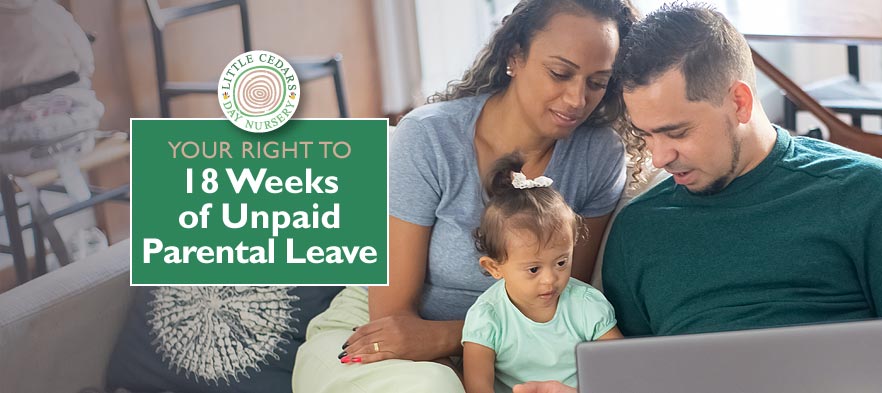
 Your Right to Unpaid Parental Leave
Your Right to Unpaid Parental Leave For example, there may come a time when parents need to look at nurseries, pre-schools, primary and secondary schools and, as children approach their mid teens, further education settings. Other reasons to take time off might include time for parents to visit relatives with the children, or to investigate extra-curricular activities such as sports clubs, or simply to spend quality time with their children.
For example, there may come a time when parents need to look at nurseries, pre-schools, primary and secondary schools and, as children approach their mid teens, further education settings. Other reasons to take time off might include time for parents to visit relatives with the children, or to investigate extra-curricular activities such as sports clubs, or simply to spend quality time with their children. It doesn’t really matter if you change jobs. The rules around unpaid parental leave apply in relation to your child(ren); not your employer. So, if you change jobs and have already used up 9 weeks of unpaid leave for one child during your previous job, then you can still use another 9 weeks, so long as it’s taken before your child reaches the age of 18.
It doesn’t really matter if you change jobs. The rules around unpaid parental leave apply in relation to your child(ren); not your employer. So, if you change jobs and have already used up 9 weeks of unpaid leave for one child during your previous job, then you can still use another 9 weeks, so long as it’s taken before your child reaches the age of 18. To claim a period of unpaid parental leave, just 21 days (3 weeks) of notice must be given to the employer and this must state the start and finish dates. It can be confirmed verbally although employers may request the notice in writing.
To claim a period of unpaid parental leave, just 21 days (3 weeks) of notice must be given to the employer and this must state the start and finish dates. It can be confirmed verbally although employers may request the notice in writing.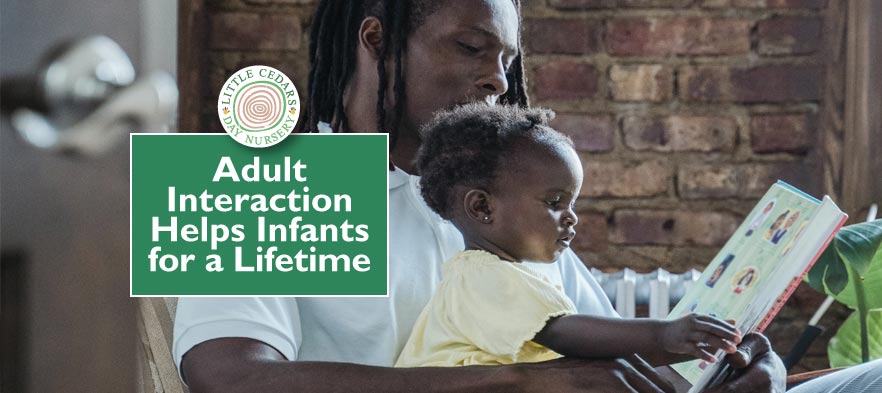
 The Government’s Early Years Foundation Stage (‘EYFS’) framework prescribes how adults should approach the education and development of children under five. As such, it forms the backbone of the curriculum at childcare settings like Little Cedars Nursery in Streatham. The EYFS guidelines were expanded this year (2021) and one aspect of early childhood development discussed therein merits closer exploration: the affect of adult interaction on an infant’s brain development. Here we take a look.
The Government’s Early Years Foundation Stage (‘EYFS’) framework prescribes how adults should approach the education and development of children under five. As such, it forms the backbone of the curriculum at childcare settings like Little Cedars Nursery in Streatham. The EYFS guidelines were expanded this year (2021) and one aspect of early childhood development discussed therein merits closer exploration: the affect of adult interaction on an infant’s brain development. Here we take a look. Their research suggests that constructive experiences will build on and enhance the structure of the brain, whereas “adverse experiences early in life can impair brain architecture, with negative effects lasting into adulthood.”
Their research suggests that constructive experiences will build on and enhance the structure of the brain, whereas “adverse experiences early in life can impair brain architecture, with negative effects lasting into adulthood.” The Harvard Center on the Developing Child suggests that parents1 can help babies and toddlers develop their brain architecture in the best way through regular and strategic interaction between adult and infant. They call the process ‘serve and return’. Think of it as a tennis metaphor— we’ll explain. First, the child may indicate an interest in an object or activity. That’s the serve of the tennis ball, if you like. The adult should look out for such indications of interest, recognise them as a kind of invitation from the child and then get involved with that object or activity with the child. Responding in this way is like the ‘return’ of the ball in the tennis metaphor. It’s a great approach because the child is indicating what they are interested in and therefore, when a parent responds through activity involving themselves with the source of interest, the child will naturally get more from the interaction. After all, it was they who first indicated an interest and an adult can now help them to get the most from it.
The Harvard Center on the Developing Child suggests that parents1 can help babies and toddlers develop their brain architecture in the best way through regular and strategic interaction between adult and infant. They call the process ‘serve and return’. Think of it as a tennis metaphor— we’ll explain. First, the child may indicate an interest in an object or activity. That’s the serve of the tennis ball, if you like. The adult should look out for such indications of interest, recognise them as a kind of invitation from the child and then get involved with that object or activity with the child. Responding in this way is like the ‘return’ of the ball in the tennis metaphor. It’s a great approach because the child is indicating what they are interested in and therefore, when a parent responds through activity involving themselves with the source of interest, the child will naturally get more from the interaction. After all, it was they who first indicated an interest and an adult can now help them to get the most from it. Repetition is also important. This helps to reinforce circuits in the brain. Reminding a child several times about something will naturally help them to understand and remember the point under scrutiny.
Repetition is also important. This helps to reinforce circuits in the brain. Reminding a child several times about something will naturally help them to understand and remember the point under scrutiny. The research, as well as a good dose of common sense, shows the incredible importance of parents interacting well with children from the moment they are born. Their interaction and guidance will help the developing child to understand themselves, the world around them, and their place within it. Millions of brain connections are built with every interaction, building healthy foundations upon which the baby will grow into a well-rounded individual with the requisite cognitive, physical, social and emotional skills to handle life. It all comes down to love, responsive and responsible care, with parents matching the infant’s signals and needs with positive, insightful responses. The reassurance and tools such interactions give the infant will allow them to confidently, safely and comfortably explore and learn about the world and, going forwards, their place within it.
The research, as well as a good dose of common sense, shows the incredible importance of parents interacting well with children from the moment they are born. Their interaction and guidance will help the developing child to understand themselves, the world around them, and their place within it. Millions of brain connections are built with every interaction, building healthy foundations upon which the baby will grow into a well-rounded individual with the requisite cognitive, physical, social and emotional skills to handle life. It all comes down to love, responsive and responsible care, with parents matching the infant’s signals and needs with positive, insightful responses. The reassurance and tools such interactions give the infant will allow them to confidently, safely and comfortably explore and learn about the world and, going forwards, their place within it.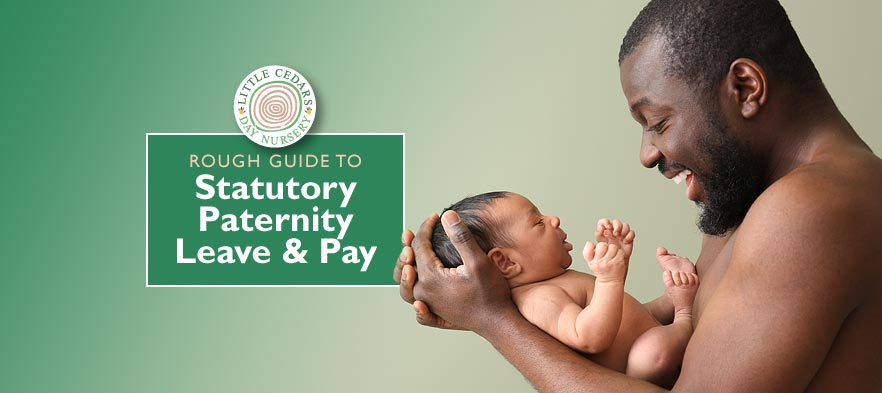
 Following up from our
Following up from our  The father, or partner of the mother, must give their employer at least 15 weeks’ advance notice that they wish to take Statutory Paternity Leave. This can be imprecise, however, given that they won’t be 100% certain which day the child(ren) will be born. If they later change the proposed date, employers must be given at least 28 days (4 weeks) notice of the change, made in writing if requested by the employer.
The father, or partner of the mother, must give their employer at least 15 weeks’ advance notice that they wish to take Statutory Paternity Leave. This can be imprecise, however, given that they won’t be 100% certain which day the child(ren) will be born. If they later change the proposed date, employers must be given at least 28 days (4 weeks) notice of the change, made in writing if requested by the employer. the child’s father, or
the child’s father, or To be eligible for Statutory Paternity Pay, a person needs to:
To be eligible for Statutory Paternity Pay, a person needs to: The payments are made through their wages by the employer after deducting any tax and National Insurance if due. (Figures correct at September 2021).
The payments are made through their wages by the employer after deducting any tax and National Insurance if due. (Figures correct at September 2021).
 Today, we’ll take a look at how much time and money mothers are entitled to under Statutory Maternity Leave and what the eligibility requirements are. We’ll concentrate purely on the rules for mothers who are employees in this post. However, we will follow up to cover paternity leave, shared leave and support for self-employed mothers separately, in future guides.
Today, we’ll take a look at how much time and money mothers are entitled to under Statutory Maternity Leave and what the eligibility requirements are. We’ll concentrate purely on the rules for mothers who are employees in this post. However, we will follow up to cover paternity leave, shared leave and support for self-employed mothers separately, in future guides. The good news is that, to be eligible for Statutory Maternity Leave in the UK, just two main rules apply. You need to:
The good news is that, to be eligible for Statutory Maternity Leave in the UK, just two main rules apply. You need to: Statutory Maternity Pay (‘SMP’) is available to mothers who:
Statutory Maternity Pay (‘SMP’) is available to mothers who: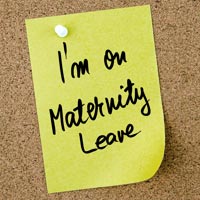 There’s a great online tool that you can use to check whether you are eligible to claim maternity/paternity leave and pay (as well as Maternity Allowance, which may help self-employed mums). It’ll also calculate how much you could receive. Head over to
There’s a great online tool that you can use to check whether you are eligible to claim maternity/paternity leave and pay (as well as Maternity Allowance, which may help self-employed mums). It’ll also calculate how much you could receive. Head over to 
 Recent studies show that use of connected screens and devices by children, including under-fives, is growing fast. The pandemic appears to have increased kids’ screen use too, as children have spent more time indoors and less time playing ‘in person’ with friends.
Recent studies show that use of connected screens and devices by children, including under-fives, is growing fast. The pandemic appears to have increased kids’ screen use too, as children have spent more time indoors and less time playing ‘in person’ with friends. Over 75% of children under five have access to a connected device, with up to 60% of preschoolers actually owning their own.
Over 75% of children under five have access to a connected device, with up to 60% of preschoolers actually owning their own. “Parents have always played a huge role in curating what [under-fives] consume and how their time is spent, but toddlers are now confidently navigating digital platforms for themselves, and using touchscreen devices with purpose and determination.” (Childwise)
“Parents have always played a huge role in curating what [under-fives] consume and how their time is spent, but toddlers are now confidently navigating digital platforms for themselves, and using touchscreen devices with purpose and determination.” (Childwise) that the ‘RF wireless radiation’ emitted by Wi-Fi connected screens and devices may carry potential health risks particularly, they argue, for pregnant women, their unborn foetuses and the young. The very young, of course, have brains that are still at a critical development stage. For this reason, the experts concerned advocate that access to devices like mobile phones should be limited, removed from children’s bedrooms at night or, at the very least, placed in Flight Mode when possible. Using devices wired instead of using Wi-Fi apparently reduces risks. Use of them in hands-free mode is another useful approach, so that the devices are not so close to youngsters’ heads. We’re not experts ourselves, but these measures seem like sensible precautions.
that the ‘RF wireless radiation’ emitted by Wi-Fi connected screens and devices may carry potential health risks particularly, they argue, for pregnant women, their unborn foetuses and the young. The very young, of course, have brains that are still at a critical development stage. For this reason, the experts concerned advocate that access to devices like mobile phones should be limited, removed from children’s bedrooms at night or, at the very least, placed in Flight Mode when possible. Using devices wired instead of using Wi-Fi apparently reduces risks. Use of them in hands-free mode is another useful approach, so that the devices are not so close to youngsters’ heads. We’re not experts ourselves, but these measures seem like sensible precautions. While time spent by children on connected screens and devices is rising, it’s not all bad news. The pandemic has also seen an increase in the time that parents have been spending with children, including on shared screen viewing as well as on other pastimes like baking, crafts and family activities. At the end of the day, it’s all about a healthy balance and, of course, adult supervision to ensure children’s wellbeing at all times.
While time spent by children on connected screens and devices is rising, it’s not all bad news. The pandemic has also seen an increase in the time that parents have been spending with children, including on shared screen viewing as well as on other pastimes like baking, crafts and family activities. At the end of the day, it’s all about a healthy balance and, of course, adult supervision to ensure children’s wellbeing at all times.
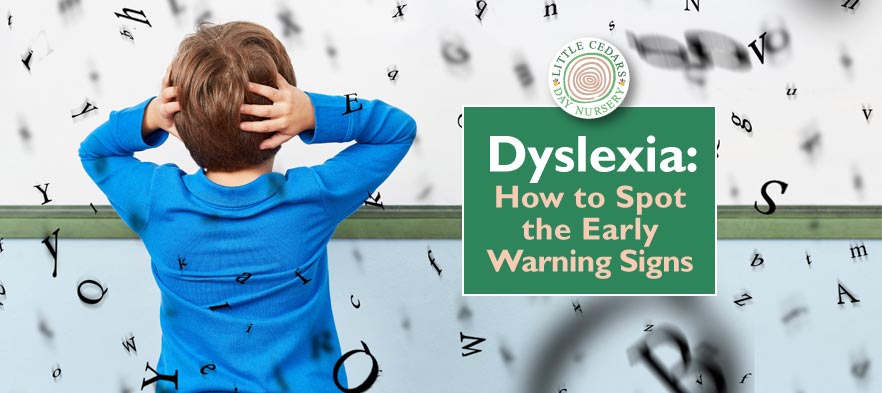
 Despite many dyslexic people being highly intelligent, dyslexia makes it difficult for them to recognise words and/or be able to break them down into their smaller components. It is recognised as a Specific Learning Difficulty (‘SpLD’) and can seriously affect their education if not recognised and addressed early.
Despite many dyslexic people being highly intelligent, dyslexia makes it difficult for them to recognise words and/or be able to break them down into their smaller components. It is recognised as a Specific Learning Difficulty (‘SpLD’) and can seriously affect their education if not recognised and addressed early. Such an affliction can have profound implications for a person. It will adversely affect their reading, writing and comprehension, thereby limiting their overall learning capability and hindering overall literacy. These are particularly critical skills during their early years as that’s at the start of their education, when the knock-on effects of such limiting factors will be at their most significant. It will slow down their progress in many topics and areas of education, also leading potentially to lower self-confidence and possibly even getting them mislabelled as ‘slow’ or ‘lazy’ by the unenlightened. Ultimately, it can severely limit their potential careers and life outcomes.
Such an affliction can have profound implications for a person. It will adversely affect their reading, writing and comprehension, thereby limiting their overall learning capability and hindering overall literacy. These are particularly critical skills during their early years as that’s at the start of their education, when the knock-on effects of such limiting factors will be at their most significant. It will slow down their progress in many topics and areas of education, also leading potentially to lower self-confidence and possibly even getting them mislabelled as ‘slow’ or ‘lazy’ by the unenlightened. Ultimately, it can severely limit their potential careers and life outcomes. Children finding it difficult to learn the alphabet;
Children finding it difficult to learn the alphabet; The child describing words and letters as visually jumbling, blurring or even moving around when they try to read them;
The child describing words and letters as visually jumbling, blurring or even moving around when they try to read them; There is no cure for dyslexia, but measures to mitigate its effects can be taken by education professionals, parents, carers and even those affected by it. It’s incredibly important, though, for both parents and education professionals to try to recognise it early, for example at nursery or pre-school, so that a suitable teaching programme can be introduced as early as possible.
There is no cure for dyslexia, but measures to mitigate its effects can be taken by education professionals, parents, carers and even those affected by it. It’s incredibly important, though, for both parents and education professionals to try to recognise it early, for example at nursery or pre-school, so that a suitable teaching programme can be introduced as early as possible.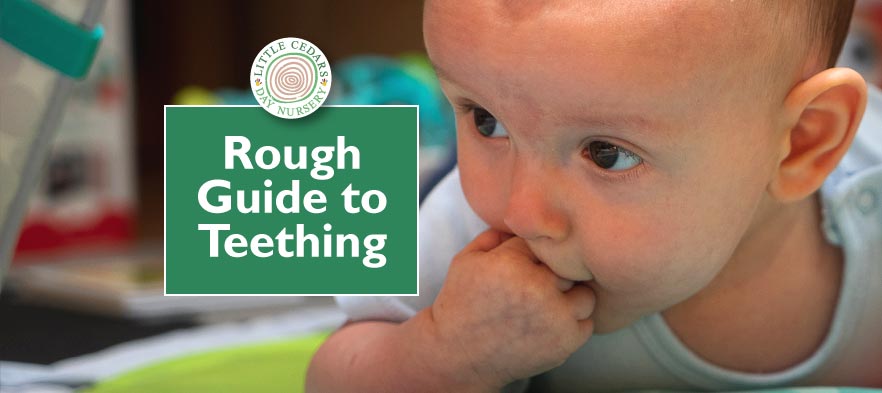
 Teething can be an uncomfortable and painful stage for babies. As teeth start to come through, gums can become sore. Because of this, the little ones can become irritable and emotional, without really understanding why they’re feeling as they do. Every parent will know that having an irritable, tearful baby can be stressful for parents as well as for the baby. With all of this in mind, our Rough Guide to Teething should help parents to help their babies through this difficult stage.
Teething can be an uncomfortable and painful stage for babies. As teeth start to come through, gums can become sore. Because of this, the little ones can become irritable and emotional, without really understanding why they’re feeling as they do. Every parent will know that having an irritable, tearful baby can be stressful for parents as well as for the baby. With all of this in mind, our Rough Guide to Teething should help parents to help their babies through this difficult stage. Along with the bluish-grey colouration in the gums mentioned above, other signs of a teething baby include drooling, sore-looking gums, red cheeks, the baby being tearful, rubbing their ears or chewing hands/toys more than usual. If the baby does drool, ensure that their faces are regularly wiped so as to avoid painful rashes causing further discomfort.
Along with the bluish-grey colouration in the gums mentioned above, other signs of a teething baby include drooling, sore-looking gums, red cheeks, the baby being tearful, rubbing their ears or chewing hands/toys more than usual. If the baby does drool, ensure that their faces are regularly wiped so as to avoid painful rashes causing further discomfort. Once your baby has one or more teeth showing through the gum, you should start brushing their teeth right away. This typically happens at the age of about 6 months. Take a look at our
Once your baby has one or more teeth showing through the gum, you should start brushing their teeth right away. This typically happens at the age of about 6 months. Take a look at our 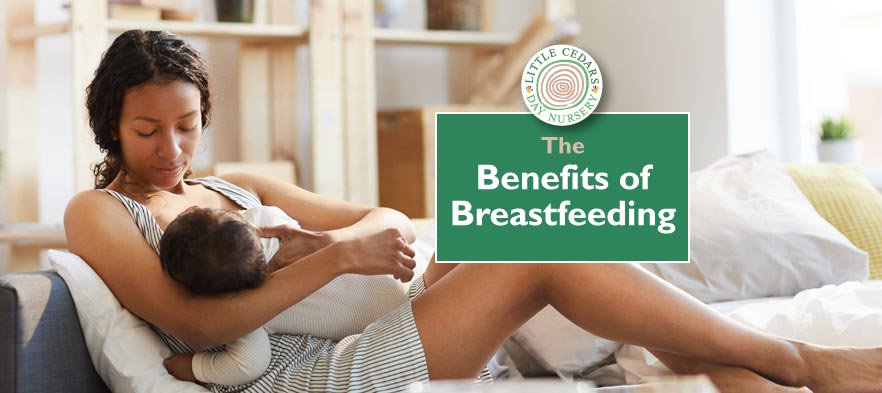
 Babies benefit enormously from breast milk; from simple, practical considerations to major health benefits, many of which continue to benefit them into adulthood. Let’s take a look:
Babies benefit enormously from breast milk; from simple, practical considerations to major health benefits, many of which continue to benefit them into adulthood. Let’s take a look: Breastfeeding also has a range of significant health (and other) benefits for mothers. These include:
Breastfeeding also has a range of significant health (and other) benefits for mothers. These include: The childcare professionals at Little Cedars Nursery are keen to fall in with the wishes of parents when it comes to baby and infant milk. To that end, parents are free to supply
The childcare professionals at Little Cedars Nursery are keen to fall in with the wishes of parents when it comes to baby and infant milk. To that end, parents are free to supply 